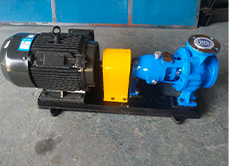Maori
- Afrikaans
- Albanian
- Amharic
- Arabic
- Armenian
- Azerbaijani
- Basque
- Belarusian
- Bengali
- Bosnian
- Bulgarian
- Catalan
- Cebuano
- Corsican
- Croatian
- Czech
- Danish
- Dutch
- English
- Esperanto
- Estonian
- Finnish
- French
- Frisian
- Galician
- Georgian
- German
- Greek
- Gujarati
- Haitian Creole
- hausa
- hawaiian
- Hebrew
- Hindi
- Miao
- Hungarian
- Icelandic
- igbo
- Indonesian
- irish
- Italian
- Japanese
- Javanese
- Kannada
- kazakh
- Khmer
- Rwandese
- Korean
- Kurdish
- Kyrgyz
- Lao
- Latin
- Latvian
- Lithuanian
- Luxembourgish
- Macedonian
- Malgashi
- Malay
- Malayalam
- Maltese
- Maori
- Marathi
- Mongolian
- Myanmar
- Nepali
- Norwegian
- Norwegian
- Occitan
- Pashto
- Persian
- Polish
- Portuguese
- Punjabi
- Romanian
- Russian
- Samoan
- Scottish Gaelic
- Serbian
- Sesotho
- Shona
- Sindhi
- Sinhala
- Slovak
- Slovenian
- Somali
- Spanish
- Sundanese
- Swahili
- Swedish
- Tagalog
- Tajik
- Tamil
- Tatar
- Telugu
- Thai
- Turkish
- Turkmen
- Ukrainian
- Urdu
- Uighur
- Uzbek
- Vietnamese
- Welsh
- Bantu
- Yiddish
- Yoruba
- Zulu
Telephone: +86 13120555503
Email: frank@cypump.com
Nov . 20, 2024 12:49 Back to list
how does a double suction pump work
Understanding How a Double Suction Pump Works
A double suction pump is an essential device widely utilized in various industrial applications, particularly in water treatment, power generation, and other fluid transfer systems. These pumps are designed to handle large volumes of fluid efficiently and are recognized for their ability to minimize hydraulic thrust and improve reliability. In this article, we will delve into the mechanics of how a double suction pump works, its components, and its advantages.
Basic Design and Components
The defining feature of a double suction pump is its configuration that allows water (or other fluids) to enter the impeller from both sides. This unique design consists of several key components
1. Impeller The heart of the pump, the impeller consists of blades that rotate to impart energy to the fluid. In a double suction pump, the impeller usually has two inlets, which allows fluid to enter from both the front and rear, effectively creating a balanced force.
2. Casing The outer shell of the pump contains the impeller and guides the flow of fluid into and out of the pump. The casing is typically designed to minimize turbulence and ensure optimal hydraulic performance.
3. Suction and Discharge Flanges These are the points where the fluid enters and exits the pump. With double suction pumps, the flanges are strategically positioned to accommodate the dual inlet design.
4. Shaft and Bearings The shaft connects the motor to the impeller, driving the rotation. Bearings support the shaft and reduce friction, enhancing the pump's longevity and reliability.
Operating Principle
The operation of a double suction pump hinges on the principles of fluid dynamics and centrifugal force. When the pump is activated, the motor spins the impeller at a high speed. As the impeller rotates, it creates a low-pressure area at the center of the pump, sucking fluid into the impeller eye from both sides.
how does a double suction pump work

As the fluid enters the impeller, it is accelerated outward by the rotating blades, transforming kinetic energy into pressure energy. This process lifts the fluid vertically and pushes it axially through the pump casing. The fluid then exits the pump through the discharge flange with increased pressure, ready to be transported through the pipeline.
One of the key advantages of the double suction design is that it helps balance the axial thrust produced by the fluid dynamics. Unlike single suction pumps, where the fluid enters from only one side, a double suction pump equalizes forces on either side of the impeller, reducing wear on the bearings and enhancing the pump's lifespan.
Advantages of Double Suction Pumps
1. Increased Efficiency The design minimizes hydraulic losses, allowing for higher efficiency and better performance, especially in high-capacity applications.
2. Reduced Axial Thrust The balanced design significantly reduces axial thrust, prolonging the life of bearings and other components.
3. Versatility They can handle large flow rates and are suitable for various fluids, including water, chemicals, and slurries.
4. Lower Maintenance Costs With reduced wear and tear due to balanced hydraulic forces, maintenance and operational costs are typically lower than for comparable single suction pumps.
5. Space Efficiency Double suction pumps often deliver high performance without requiring additional space, making them ideal for installations with limited room.
Conclusion
In conclusion, double suction pumps play a vital role in many industrial processes, offering unique benefits derived from their balanced design and high efficiency. Understanding how these pumps operate can help industries choose the right equipment for their fluid transfer needs, ultimately leading to improved productivity and reduced operational costs. Whether you are dealing with water supply, irrigation, or industrial fluid processing, a double suction pump can be an invaluable asset in achieving reliable and efficient operations.
-
China Small Slurry Pump Manufacturer - High Efficiency Small Centrifugal Slurry Pumps for Mining & Industry
NewsJun.24,2025
-
Custom Drilling Mud and Slurry Pump Supplier - High Efficiency, Tailored Solutions
NewsJun.10,2025
-
Supply Vertical Submersible Sewage Pump High-Efficiency WQ/QW Pumps Supplier
NewsJun.10,2025
-
Premium Sewage Ejection System & Pumps Efficient Waste Removal
NewsJun.09,2025
-
Premium Wholesale Slurry Pump Impellers Durable & Efficient Slurry Handling
NewsJun.09,2025
-
Top Sewage Pump Companies Durable Industrial Solutions for Efficiency
NewsJun.09,2025










